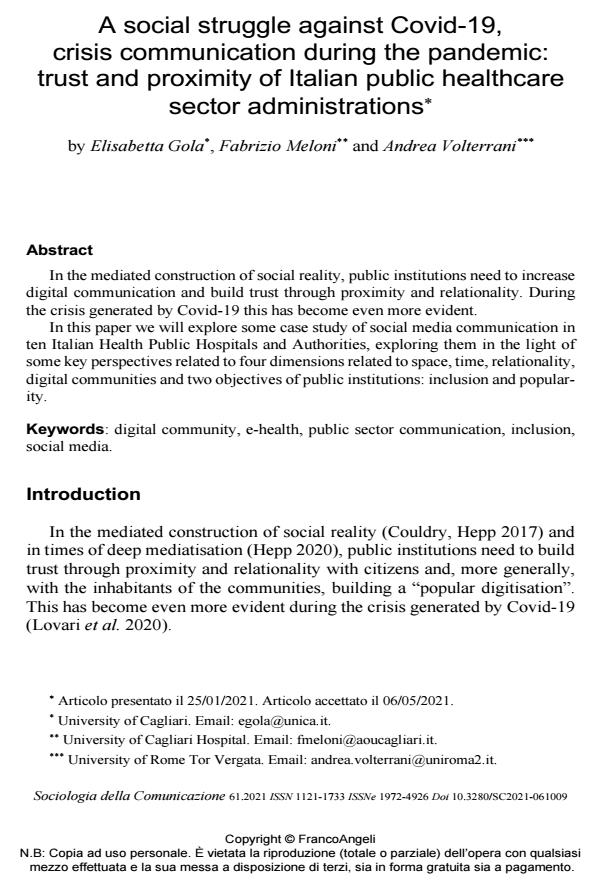A social struggle against Covid-19, crisis communication during the pandemic: trust and proximity of Italian public healthcare sector administrations
Titolo Rivista SOCIOLOGIA DELLA COMUNICAZIONE
Autori/Curatori Elisabetta Gola, Fabrizio Meloni, Andrea Volterrani
Anno di pubblicazione 2021 Fascicolo 2021/61
Lingua Inglese Numero pagine 19 P. 127-145 Dimensione file 615 KB
DOI 10.3280/SC2021-061009
Il DOI è il codice a barre della proprietà intellettuale: per saperne di più
clicca qui
Qui sotto puoi vedere in anteprima la prima pagina di questo articolo.
Se questo articolo ti interessa, lo puoi acquistare (e scaricare in formato pdf) seguendo le facili indicazioni per acquistare il download credit. Acquista Download Credits per scaricare questo Articolo in formato PDF

FrancoAngeli è membro della Publishers International Linking Association, Inc (PILA)associazione indipendente e non profit per facilitare (attraverso i servizi tecnologici implementati da CrossRef.org) l’accesso degli studiosi ai contenuti digitali nelle pubblicazioni professionali e scientifiche
In the mediated construction of social reality, public institutions need to in-crease digital communication and build trust through proximity and relationality. During the crisis generated by Covid-19 this has become even more evident. In this paper we will explore some case study of social media communication in ten Italian Health Public Hospitals and Authorities, exploring them in the light of some key perspectives related to four dimensions related to space, time, relational-ity, digital communities and two objectives of public institutions: inclusion and popularity.
Parole chiave:digital community, e-health, public sector communication, inclusion, social media.
Elisabetta Gola, Fabrizio Meloni, Andrea Volterrani, A social struggle against Covid-19, crisis communication during the pandemic: trust and proximity of Italian public healthcare sector administrations in "SOCIOLOGIA DELLA COMUNICAZIONE " 61/2021, pp 127-145, DOI: 10.3280/SC2021-061009